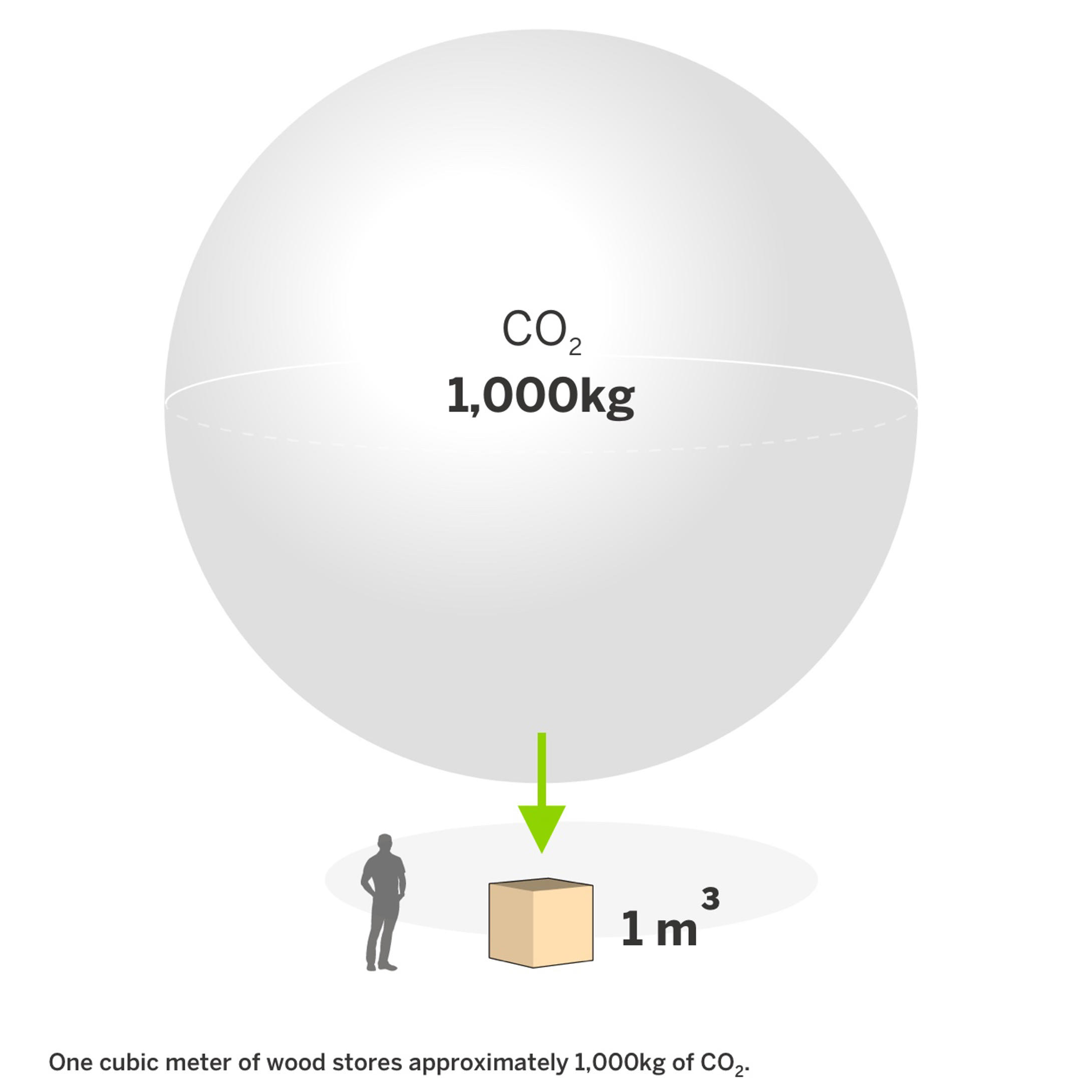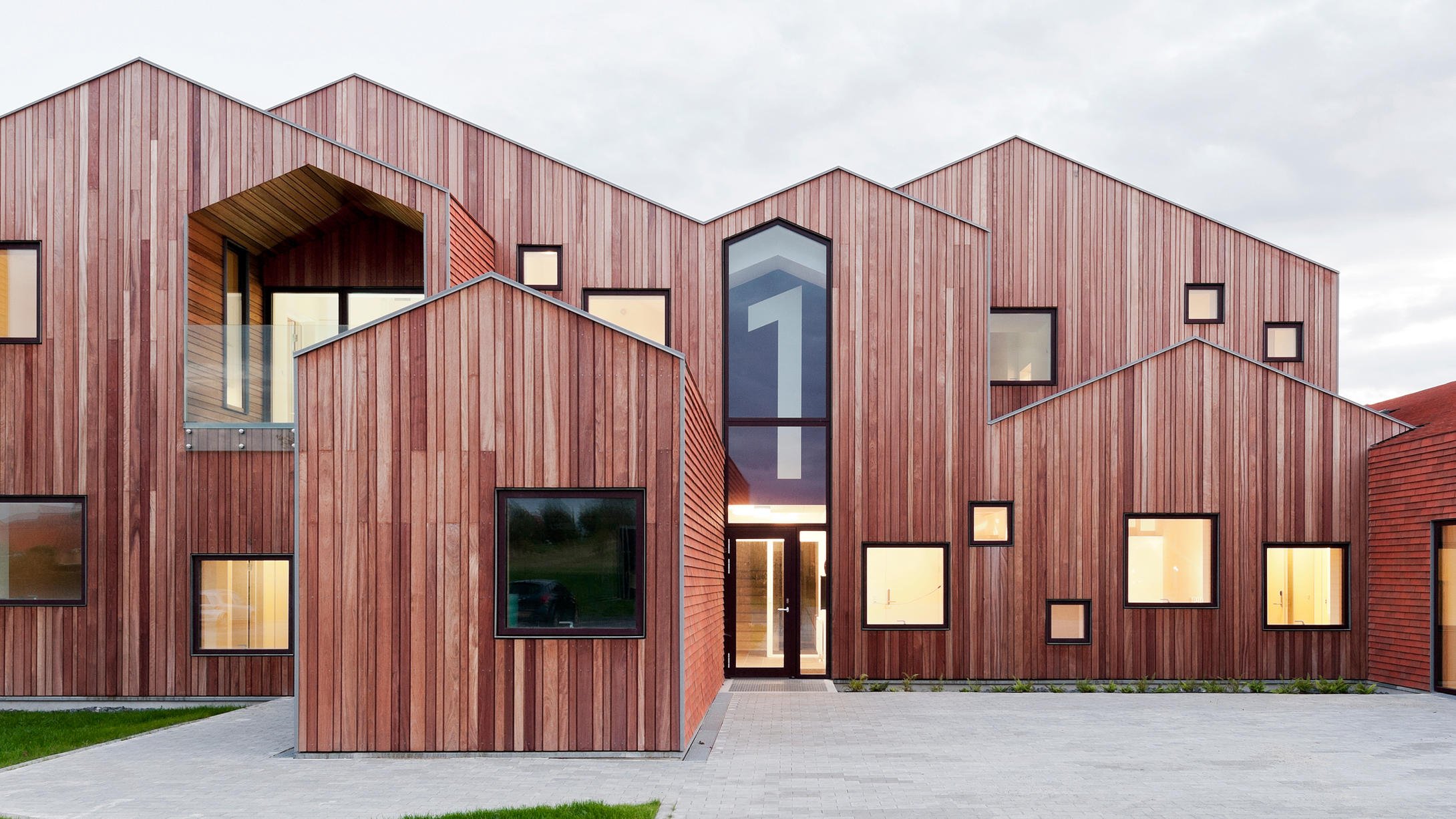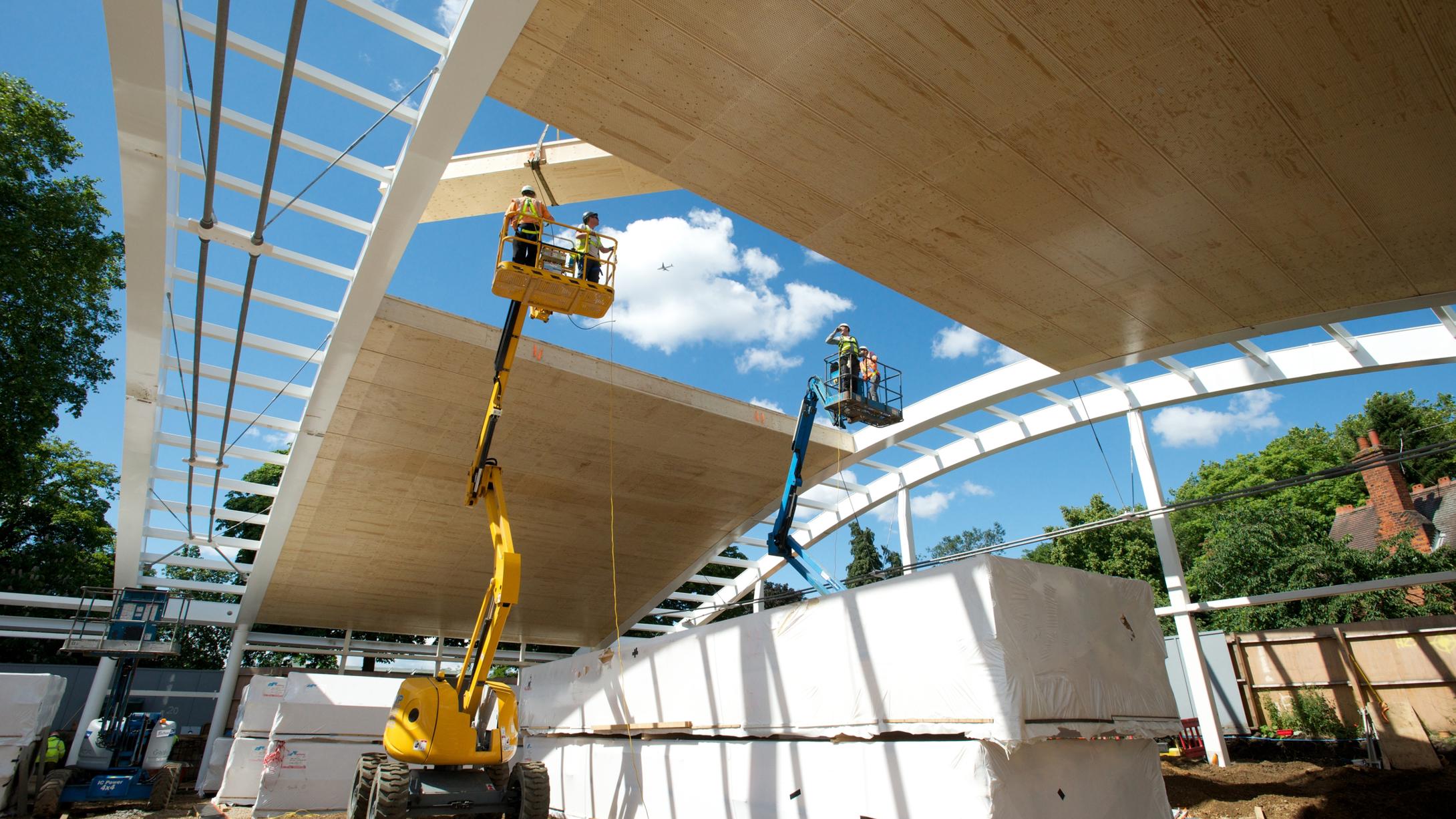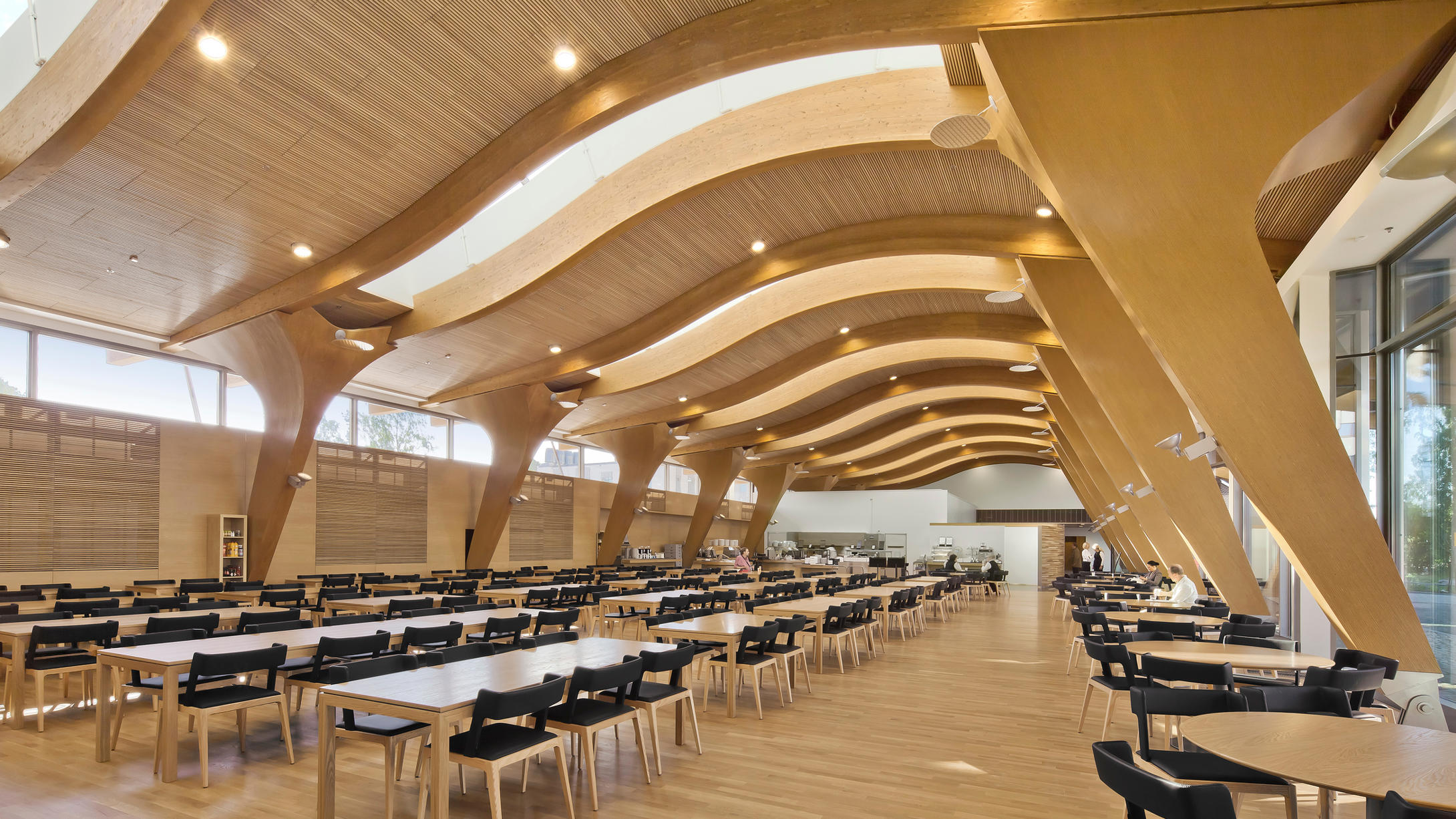One of the most important ways to mitigate climate change is to find new ways of capturing carbon from the atmosphere. As the building sector contributes up to 30% of global annual greenhouse gas emissions, it plays a vital role in battling climate change. Wood construction is a part of the solution, as timber products lock approximately 1 ton of CO2 per 1 m3 of wood.


“We need to search for the big picture solutions of today’s vast climate, environmental and world housing needs. This requires looking at the fundamentals of the way we build – from the material choices of large urban buildings to the details of energy performance”, Dr. Frank Werner from Frank Werner Environment & Development says.
The carbon footprint of Kerto® LVL (laminated veneer lumber) is actually negative: 1m3 of the product has a global warming potential of -655 kg CO2e, because large quantities of biogenic carbon are stored in the wood raw material. Furthermore, the wood used by Metsä Wood always comes from sustainably managed forests.
Carbon storage for entire building's life span

The construction sector can make a real difference by using wooden construction materials that both capture carbon for their entire life span as well as are produced with very little CO2 emissions during production.
“While planning any new building or renovating an existing one, we should look at the emissions created during the entire life cycle of the building – from the production of construction materials to the using phase and beyond. The dry mass of wood is 50% carbon, and this carbon is taken away from the atmosphere and thus does not contribute to the greenhouse effect," Matti Kuittinen, architect and researcher from Aalto University continues.
In Europe, the renewable wood grows nowadays more than it is used, which increases the carbon capturing also in the growing phase. To guarantee the increase of forest reserve also in the future, sustainable forest management and forest certification are to be highlighted in sourcing.
Wood products can be used in all buildings
Wood-based materials can be used in most parts of any building to capture carbon from the atmosphere. This allows designers and builders to reach ambitious CO2 reduction goals. For example, a passive house was designed for a cold climate with two alternative construction material combinations: wood frame with wood-fibre insulation and an aircrete frame with EPS insulation.
“Both options gave the buildings’ shell the same level of energy efficiency. However, producing the wooden alternative caused approximately 40% less CO2 emissions. Also, the amount of atmospheric carbon stored in its wood frame was almost four times as much as in the alternative”, Kuittinen explains.
Wooden building components store carbon in all buildings regardless of their frame, insulation and cladding materials. The largest potential for storing carbon can be achieved in external walls, intermediate floors and roof structures. For example, using Metsä Wood’s Kerto LVL columns and floor elements gave a four story timber building a carbon storage of 204 kg/m2 of floor area.
Long-term carbon storage
As large amounts of carbon can be stored in the wooden parts of buildings, it is important to ensure that the carbon storage is as long-term as possible. Long service life requires good design, moisture safety during construction and good maintenance. And when the wooden parts are no longer used in buildings, they have the potential to be recycled into other products – so the atmospheric carbon stays locked away. After a cascade of recycling, wood material can be used for bioenergy production.
“A revolution of more climate friendly and sustainable building is possible with the help of well-developed, green building products. The rest is up to designers and constructors”, Werner concludes.
Quick facts
- Metsä Wood’s raw material is 100% traceable and 90% certified.
- Metsä Wood uses raw material efficiently: the side streams not used in the production of Kerto LVL are used to produce bioenergy and biofuels.
- Using biofuels in production ensures low fossil CO2 emissions.
- Finnish forests act as carbon sinks because the forests grow faster than they are harvested.
- The carbon stored in an average wooden single family house equals the amount of carbon that one family produces by driving a car for 10 years or by flying south on holiday 10 times.



